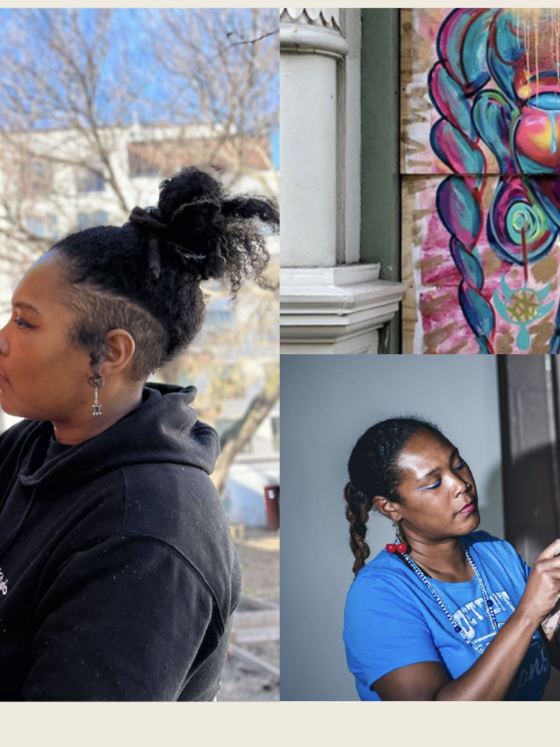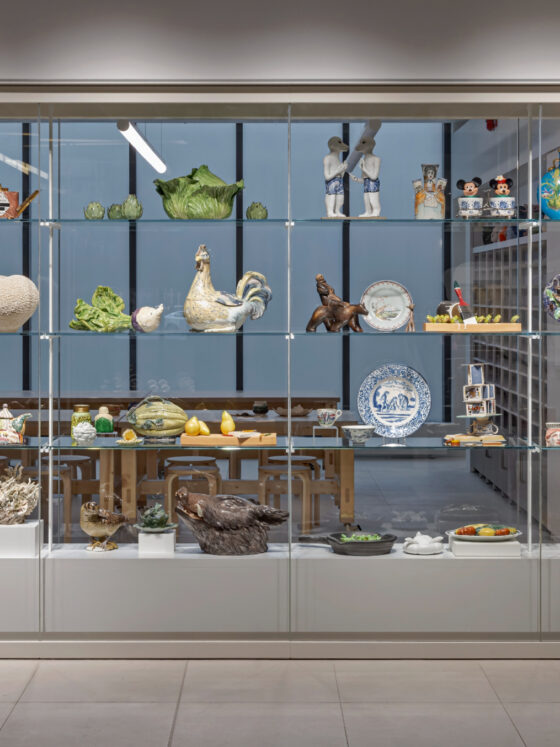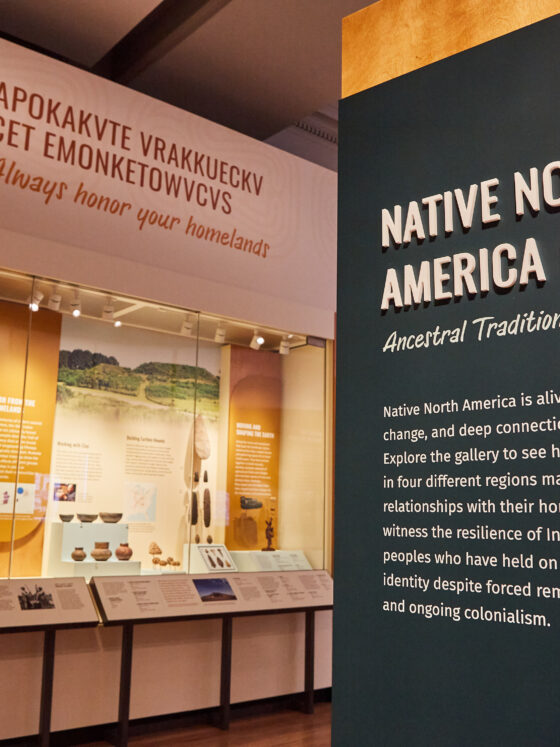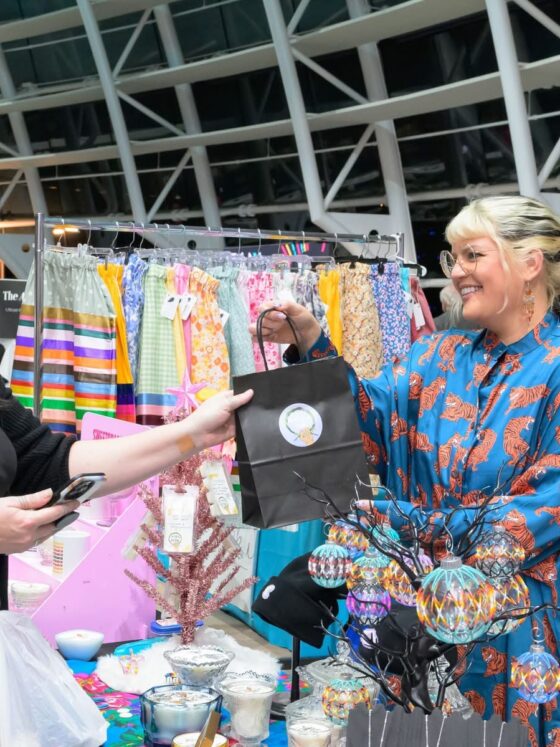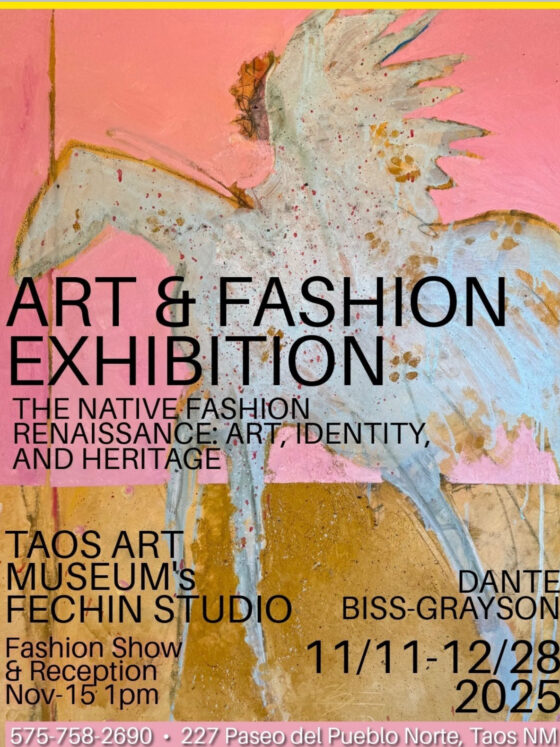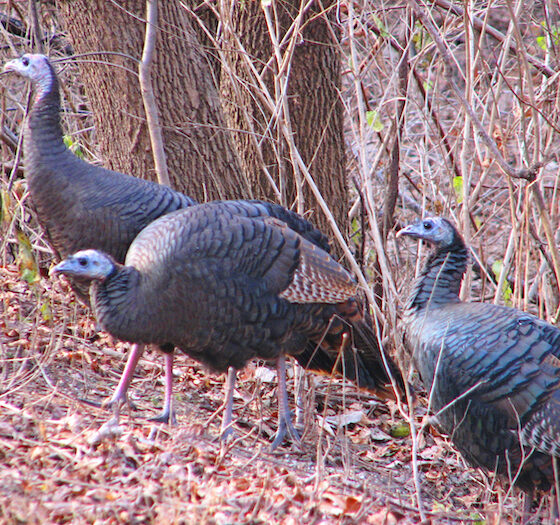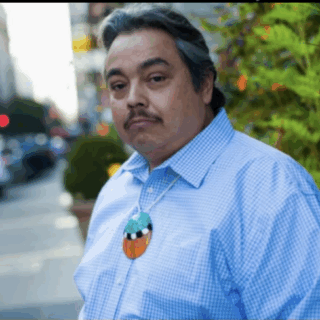Reporter’s Notebook: Chadd Scott at the Santa Fe Indian Market, Day 3
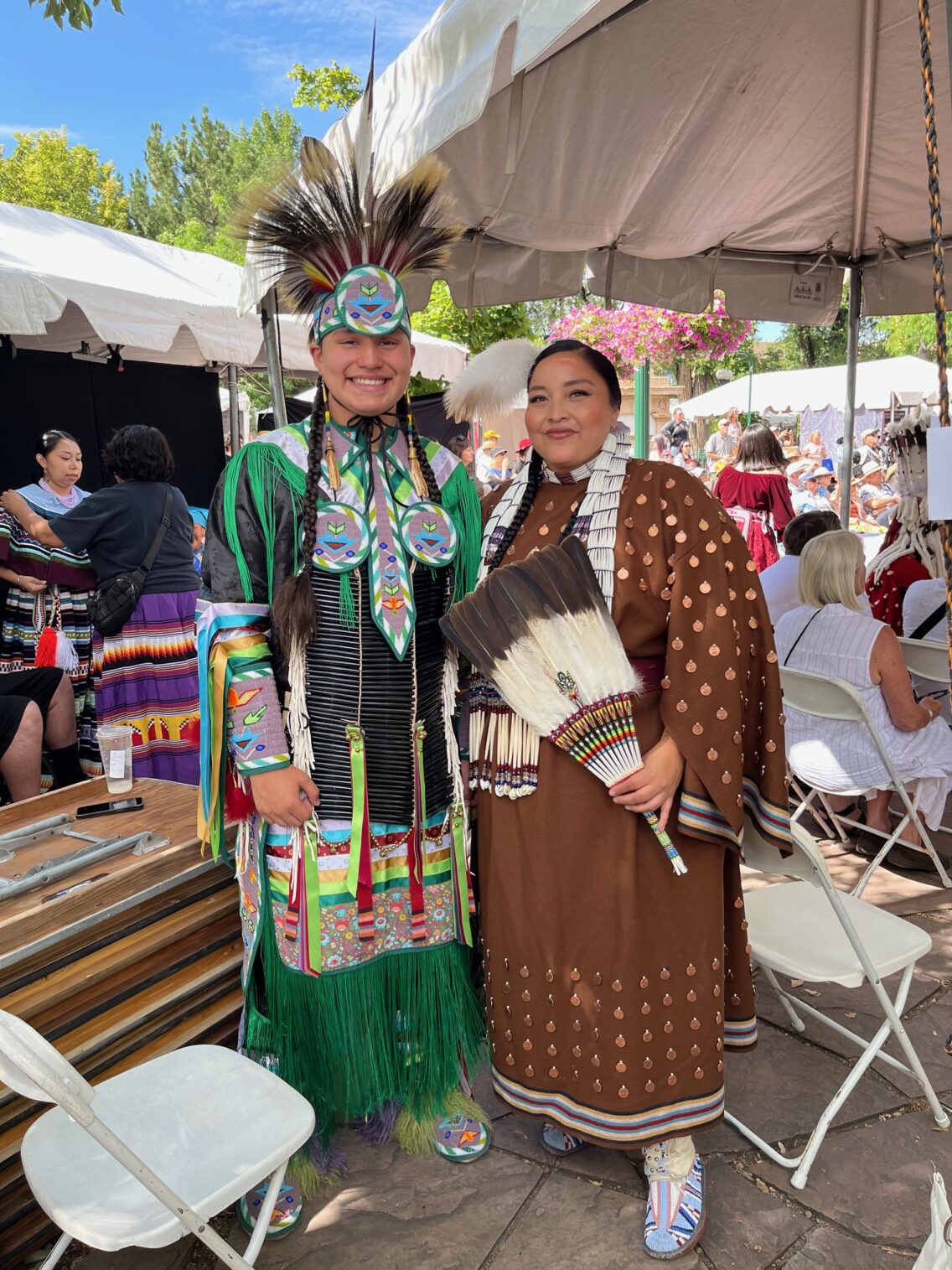
Sundays at Indian Market are highlighted by a pair of events, one in the morning, the other in the afternoon. The SWAIA Native Fashion Show at the Santa Fe Convention Center has become the hottest ticket at Market. Indigenous designers and models show off Native haute couture to a raucous standing room only crowd in a runway fashion show.
Special to Fry Bread by Chadd Scott of See Great Art.
Patricia Michaels’ (Taos Pueblo) runner-up finish on the 2013 season of the popular Bravo fashion design competition series Project Runway put a mainstream spotlight on Native fashion it hadn’t received since the turquoise/concho belt/denim/leather fringe Western wear craze of the early 1970s. With social media able to spread contemporary Indigenous designs, bypassing gatekeepers in the fashion media, the popularity of Native fashion began taking off.
When Indian Market returned in-person following a one-year COVID hiatus online, the Native Fashion Show had elevated itself into a grand finale for the weekend.
This year’s designers were Jamie Okuma (Luiseno, Shoshone-Bannock, Wailaki, & Okinawan), Lauren Good Day (Arikara, Hidatsa, Blackfeet and Plains Cree), Penny Singer (Navajo), Osamuskwasis (Cree and Dene designer from Pigeon Lake, Alberta), and Jontay Kham (Plains Cree).

Sunday morning, the roots of the Native Fashion Show were on display during the Native American Regalia Showcase on the Plaza main stage. Here, handmade traditional garments from across Indian Country were shown off.
In 2024, this event transitioned from what was previously a clothing contest into what it is now. Southwestern Association for Indian Arts officials increasingly disliked the idea of pitting different tribes’ traditional regalia against each other. Organizers were looking for something more respectful, more educational.
Now, during the Regalia Showcase, artists share stories of their creations. Spectators listen while makers explain the materials, meaning, production, and history of the regalia. Some artists wear their own pieces, others have models – typically family members – wear items. Hearing the artists describe what they’ve put together in their own words, and its significance, adds a great deal to the presentation.
Regalia makers need not be juried into Indian Market to participate.
What they produce can scarcely be believed. I will put a full complement of Great Plains regalia from 2025 or 1825 up against any garment or artwork from history for skill and imagination.

Sunday Goodbyes
Verifying what I suspected from my Day 2 Indian Market Reporter’s Notebook, sales on Saturday were brisk and a number of artists who sold out packed up and left for home. Sales figures are not reported at Market, and as a free, unticketed event, attendance figures are ballparks estimates. By all anecdotal accounts, however, Saturday was an all-timer for both.
Remember this if you happen to have the chance to visit Market yourself. If there’s an artist you especially want to see, do so on Saturday in case they don’t come back on Sunday. Sunday of 2025 was low-key. Artists, artworks, and crowds felt about half as numerous as the day before. It made strolling the booths more chill, but a drag with many artists long gone.
That’s ok. SWAIA Indian Market has been taking place for 103 years, they’ll be back again in 2026.
Check out more of Chadd Scott’s work at SeeGreatArt.art.


